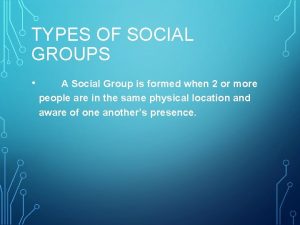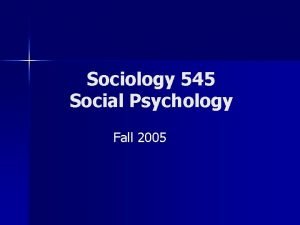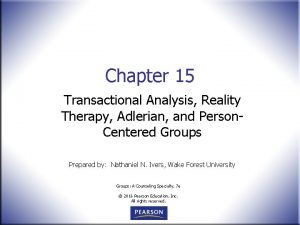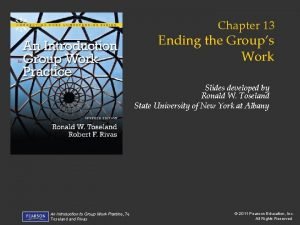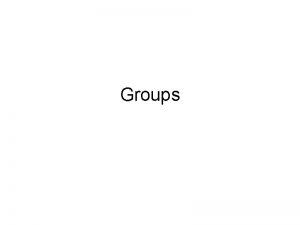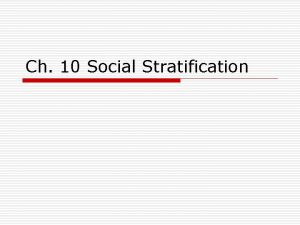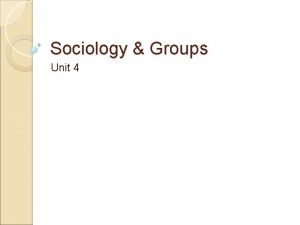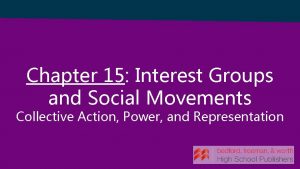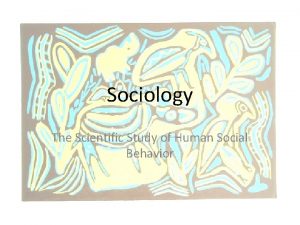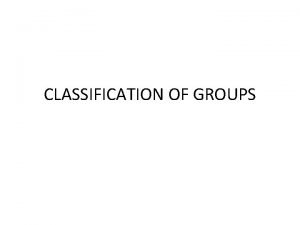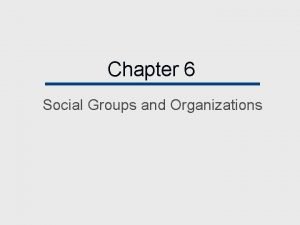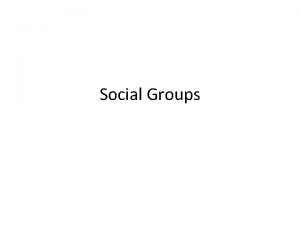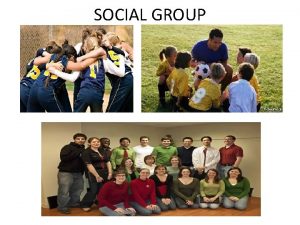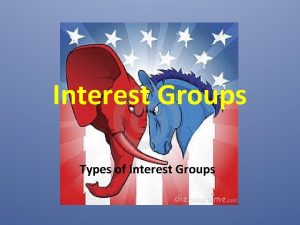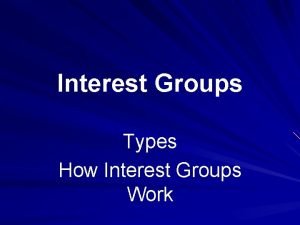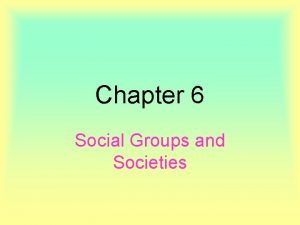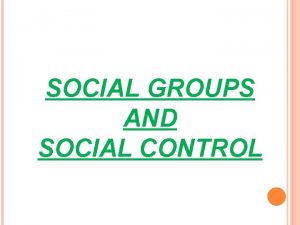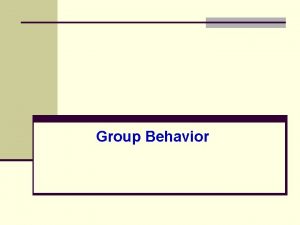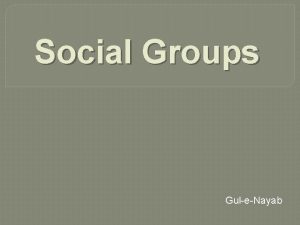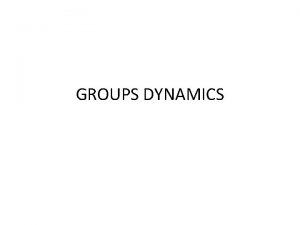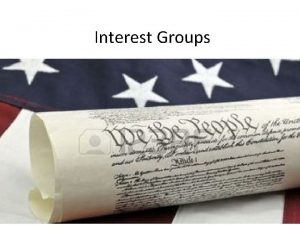TYPES OF SOCIAL GROUPS A Social Group is
















- Slides: 16

TYPES OF SOCIAL GROUPS • A Social Group is formed when 2 or more people are in the same physical location and aware of one another’s presence.

A Transitory Group is when several people happen to be in the same place at the same time but who may never be again. Their interaction is minimal. Examples: people crossing the street at the same time at the same intersection; people getting onto the same elevator; people waiting in line at the checkout at CVS

A Recurrent Group is one that meets regularly. Examples: the field hockey team; an annual family gathering; a monthly AA meeting

A Formal Group is one that has rules and regulations, scheduled meeting times, official roles assigned to members (such as treasurer, coach, etc. ), official membership list, etc. Examples: Spanish club; Congress; Sociology class

An Informal Group lacks the formality of the formal group. There may be unwritten rules, etc. Examples: a group of friends; a family; commuters sharing a bus

An In-Group is simply any group someone belongs to and feels emotional attachment to the members. An Out-Group is one that someone doesn’t belong to and feels competition and/or hatred towards. These two are different for each individual. Examples of the above: rival gangs, rival teams or their fans; cliques at school

Group members differ in the ways they interact with one another as well. This determines whether a group is Primary or Secondary. These differ in the following ways.

Emotional Intensity: Primary: Strong emotional attachment among members, love Secondary: Little emotion felt among members toward one another

Scope Primary: An individual’s entire personality is important to the group. Secondary: Only a small piece of an individual’s personality is important to the group. Can they do the job assigned?

Particularism/ Universalism Primary: Each individual is important to the group. The group is particular about who can be a member Secondary: Membership is open to all

Interaction Primary: very informal. Members feel relaxed around one another Secondary: formal. Rules exist to explain how and when interaction takes place

Aims Primary: goal is simply to enjoy one another’s company Secondary: the group meets for a specific reason. Members may have little in common beyond the reason for the group’s existence

Rules & Regulations Primary: Rules may be understood rather than written down and are very flexible. Punishments for breaking them are also flexible. Secondary: Rules are formalized and each member must follow the same rules. Punishments also are applied in a standard way for all members.

Discuss how these characteristics apply to a family (a Primary Group relationship) and a group of coworkers at Wendy’s (a Secondary Group Relationship)

Membership in these groups overlap. A group could be recurrent, formal and secondary (student council). It might also be recurrent, informal and primary (a dating couple). Members might belong to a formal group (co-workers on the job) but form informal groups (co-workers who become friends or even begin dating each other). They might interact in a primary and secondary way with differing members of the same group.

Work in groups and develop a unique example of each of the following combinations: • Recurrent, informal, secondary • Recurrent, informal primary • Recurrent, formal, primary • Transitory, informal, secondary • In-group • Out-group Do not repeat the examples already given in class.
 How are ethnic groups and religious groups related
How are ethnic groups and religious groups related Transitory group examples
Transitory group examples Different types of social groups
Different types of social groups Definition of social group
Definition of social group Different types of social group
Different types of social group Transactional analysis group therapy
Transactional analysis group therapy Command group is type of
Command group is type of Chapter 9 section 2 types of interest groups
Chapter 9 section 2 types of interest groups Toseland and rivas types of groups
Toseland and rivas types of groups Primary vs secondary group
Primary vs secondary group The hierarchical arrangement of large social groups
The hierarchical arrangement of large social groups Beureaucratic
Beureaucratic Interest groups vs social movements
Interest groups vs social movements India baby tossing
India baby tossing Models in social group work
Models in social group work Classification of primary group
Classification of primary group Characteristics of social groups
Characteristics of social groups

